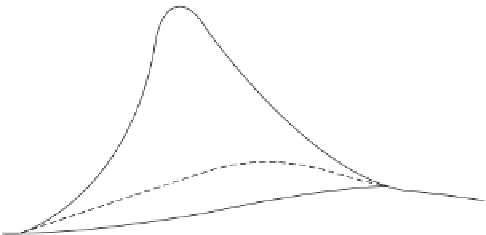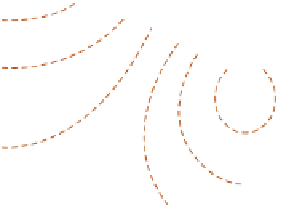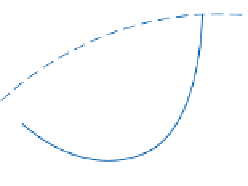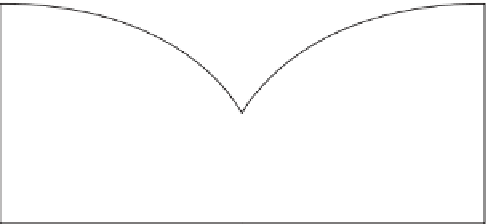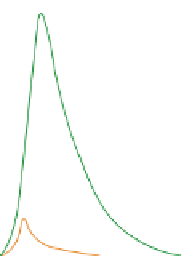Geoscience Reference
In-Depth Information
(a)
(a)
Horton overland
flow
0.4
Chatooga river
near Clayton GA
525 km
2
0.3
Through flow
Saturated
overland flow
Savannah river
near Calhoun Falls SC
7,445 km
2
Water
table
Saturated
soil
0.2
Savannah river
near Clyo GA
25,501 km
2
0.1
Ground water
flow
Stream flow
0
1234567
Time in days
8
9
10 11 12 13 14
(b)
(b)
PDV
Rainfall
2000
Lag
time
Interflow
Quickflow
Savannah river
near Clyo GA
1500
Delayed flow
Time to
rise
1000
Baseflow (ground water)
Savannah river
near Calhoun
Falls SC
500
(c)
Water table
Chatooga river
near Clayton GA
Stream
0
1234567
Time in days
8
9
10 11 12 13 14
with catchment area as channel storage capacity increases
downstream.
Source: Hoyt and Langbein
Ground water flow
Equipotential lines
influence on components of the flood hydrograph (b).
Channels are also initiated where subsurface throughflow
converges at the surface - in slope concavities, for
example. Incision creates subsidiary, steeper slopes which
then draw adjacent flow into the rill. This increased
proportion of
channelled
water reduces overall surface-
water friction losses. Rills are transient features and may
be infilled by sediment and vegetation, or continue
to focus episodic flow and develop at the expense of
neighbours into more enduring
gullies
an order of
magnitude larger (
Plate 14.7
).
The ever-increasing
downstream focus of discharge and kinetic energy on the
trunk stream is both inevitable and essential if stream flow
and sediment discharge are to overcome the parallel
decline in potential energy. The search for
hydraulic
nor frictionless. Differences in surface micro-relief and
material properties soon concentrate water in parts of the
sheet flow at the expense of others. Erosion commences
where the
erodibility
of the surface and
erosivity
of the
flow combine to exceed shear strength. Conversion of
sheet-to-channel flow is attributed to a
stochastic
process
of random events in a time-dependent sequence and
can be seen in the smallest
rills
,10
1-3
mm deep and wide.
Incision is controlled by specific material-energy con-
ditions at every turn but the preferred points of
concentration vary randomly from one event to the next.























































